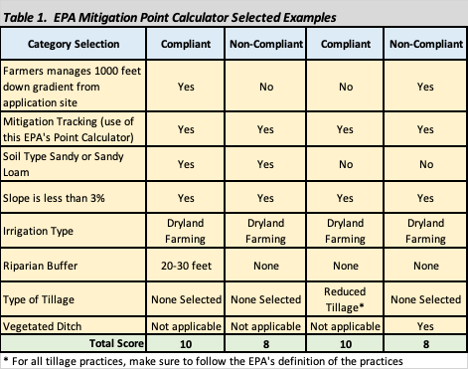Pesticide Use Under the EPA’s Endangered Species Act (ESA)
go.ncsu.edu/readext?1067562
en Español / em Português
El inglés es el idioma de control de esta página. En la medida en que haya algún conflicto entre la traducción al inglés y la traducción, el inglés prevalece.
Al hacer clic en el enlace de traducción se activa un servicio de traducción gratuito para convertir la página al español. Al igual que con cualquier traducción por Internet, la conversión no es sensible al contexto y puede que no traduzca el texto en su significado original. NC State Extension no garantiza la exactitud del texto traducido. Por favor, tenga en cuenta que algunas aplicaciones y/o servicios pueden no funcionar como se espera cuando se traducen.
Português
Inglês é o idioma de controle desta página. Na medida que haja algum conflito entre o texto original em Inglês e a tradução, o Inglês prevalece.
Ao clicar no link de tradução, um serviço gratuito de tradução será ativado para converter a página para o Português. Como em qualquer tradução pela internet, a conversão não é sensivel ao contexto e pode não ocorrer a tradução para o significado orginal. O serviço de Extensão da Carolina do Norte (NC State Extension) não garante a exatidão do texto traduzido. Por favor, observe que algumas funções ou serviços podem não funcionar como esperado após a tradução.
English
English is the controlling language of this page. To the extent there is any conflict between the English text and the translation, English controls.
Clicking on the translation link activates a free translation service to convert the page to Spanish. As with any Internet translation, the conversion is not context-sensitive and may not translate the text to its original meaning. NC State Extension does not guarantee the accuracy of the translated text. Please note that some applications and/or services may not function as expected when translated.
Collapse ▲Use of certain pesticides within an area of an endangered or threatened species and their designated critical habitat now requires examination of two websites prior to potential pesticide application. When the pesticide product label or endangered species protection bulletin, found on the Bulletins Live! Two website, instructs a user to achieve runoff or erosion points, one must evaluate the application site via a worksheet, the EPA Mitigation Point Calculator.
This worksheet will assist the user in determining whether the necessary level of mitigation has been met before applying a pesticide product. One simply selects production, slope, drainage, irrigation and other pertinent production information from a drop down dialog box. Currently, a score 9 or higher has no limitation. If the score is less than 9, application of this product is currently prohibited without mitigation efforts or in some cases, not at all. Scores that narrowly miss the target of 9 may be allowed by slight changes in management or by development of a runoff plan or other necessary changes developed and recommended by a runoff/erosion technical expert.
Examine the selection from the EPS Mitigation Point Calculator shown in Table 1. EPA Mitigation Point Calculator Selected Examples (below). This table shows the scores variance due to simple changes in soil type, existence of a riparian buffer, type of ditch, and other items available for selection (not inclusive of all selections available within the worksheet). It does reflect how the tremendous variance of field situations within Eastern NC will impact the final score. Individual scores will vary depending upon these and other criteria within the worksheet.
A direct link to the EPA’s definitions is provided within the tool. Simply make sure your definition of the practice matches that of the EPA. Review these examples as a means to determine your potential score. For those that wish to evaluate their field or production systems, please contact your local N.C. Cooperative Extension Center for an appointment.
In summary, review the pesticide label to ensure that the label does not require examining these tools prior to pesticide application. Or, if desired, visit the tools now and select typical production practices for each crop tending to determine the actual scores. If a score of 9 or higher is obtained, print out the file for your records. If a score of 9 is not met, visit the USDA NRCS office to discuss how to achieve the required runoff/erosion mitigation points.
Compliance with these new regulations is required by the pesticide label. As such, expect compliance to be reviewed by the NCDA & CS Pesticide Department during routine visits or investigations.





